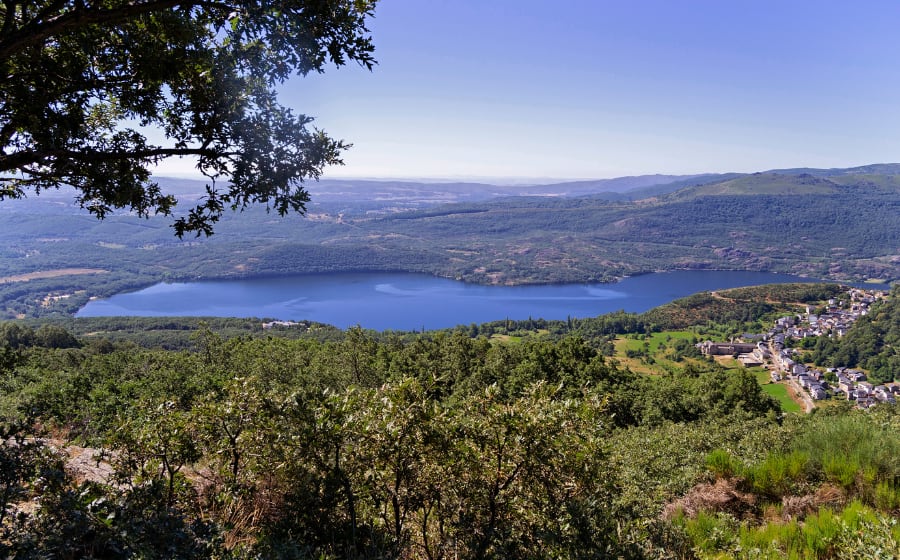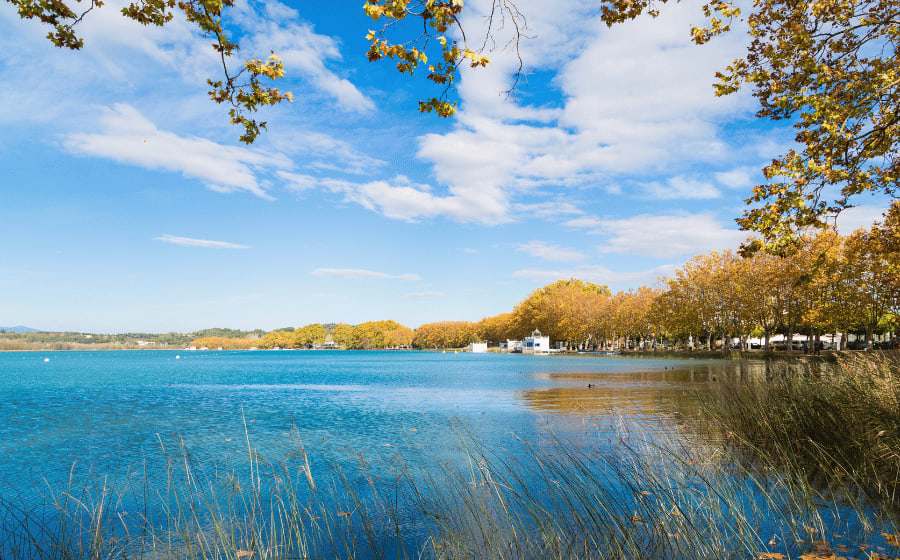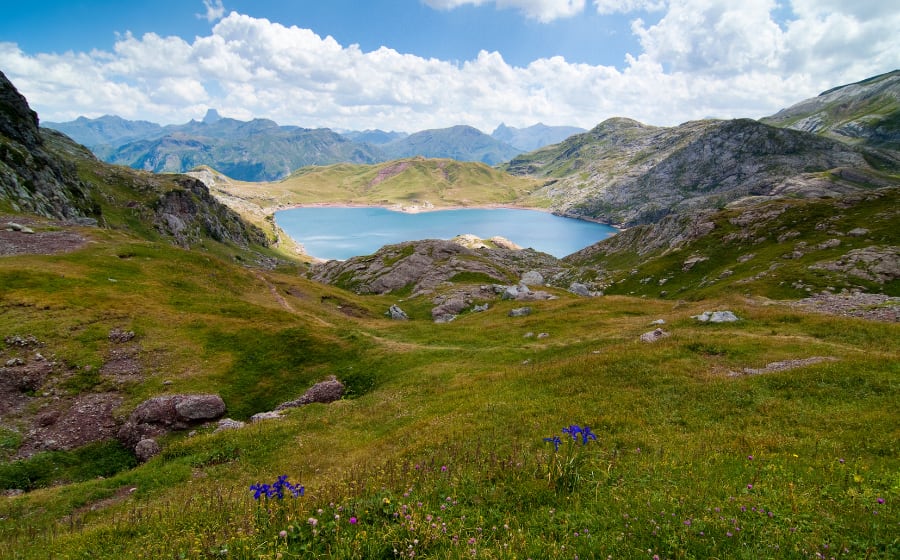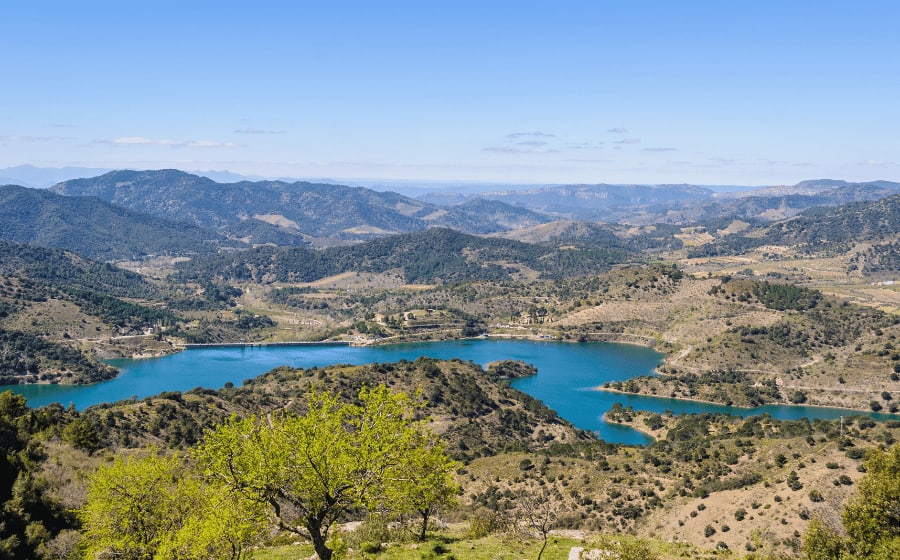9 Top Rated Lakes in Madrid to Escape the City Life
December 14, 2022
Win a FREE Trip to Spain!
Exciting Announcement! For the first time, we're thrilled to offer exclusive trips to the heart of Spain - an experience like no other. This isn't your typical tourist journey; it's a unique opportunity to immerse yourself in authentic Spanish culture, alongside real locals and our passionate team.
But there's more! Simply by requesting information about this amazing trip, you'll be entered into a special draw to win a Fully Paid Trip to Spain for Two. And that's not all - everyone who inquires will receive an exclusive bonus gift, valued at $500, available only now.
Ready to Discover the Real Spain?Click Here ↑ to Request Information & Enter the Draw!
In Madrid, we do not have a beach, BUT we have some natural pools that only some know about!
In the Community of Madrid, the melting mountains have formed several natural lakes. But there are also others that we must consider, although they are artificial.
If you are a nature lover and like water sports, you will love these lakes! They are also just a few kilometers from the center of Madrid so you can get there and be back in a day.
Are you ready to escape the city and enjoy nature? Don’t wait any longer and discover the best lakes in Madrid!
P.S.: Before you keep reading, you should know that in this list, there are some artificial lakes and some natural lakes. Also, I’ve ordered the lakes according to how close they are to the capital of Madrid (specifically from km 0 located at Puerta del Sol).
Table of Contents ▼ ▶
1. Retiro Park Lake

Depth: 1,80 meters
Surface: 5,38 km²
Distance from Madrid city: 2,8 km (10 min)
To know the origin of the Retiro lake, located in Retiro Park, we must date back to the 17th century.
The Retiro lake is an artificial lake located in the Retiro park, between Avenida Menéndez Pelayo and Calle Alfonso XII, in the Retiro District of Madrid. Its exact location is marked by one of its main gates, in the Plaza de la Independencia, right next to Puerta de Alcalá.
This park was a gift from the Count-Duke of Olivares to Philip IV. Until 1868 these gardens were for the exclusive use and enjoyment of the monarchy, but in 1868 everything changed and became part of the City Council of Madrid; since then, all citizens have had access to the park.
In the park’s heart, we find its large artificial lake, built between 1634 and 1636. This large pond is frequented by locals for sunbathing and boating. You can also host water shows, such as naval battles and the boat rides of the kings and their court.
I recommend renting a little boat to have fun at the lake. But if you have the opportunity, it would be great to do it during sunset! The price of the little boat is 6€ on weekdays and 8€ on Saturdays, Sundays and holidays.
Even in the center of the pond, there used to be an elliptical island for theatrical or musical performances. Nowadays, we cannot see it because, in the late 18th century, the waters covered the central island of the large pond.
Retiro park has been recognized, along with the Paseo del Prado, as a UNESCO World Heritage Site. So you now know that you can’t miss coming here!!
Nowadays, swimming in this lake is not allowed, but the “Winter Swimming Crossing of El Retiro” was held many years ago. It was a famous solidarity race, best known for its hardness due to the low temperatures of the water.
If you want to know more about the Retiro Park and other impressive gardens in Spain, I recommend you to read this post:
12 Breathtaking Gardens in the Heart of Spain and its Cities
2. Casa de Campo Lake
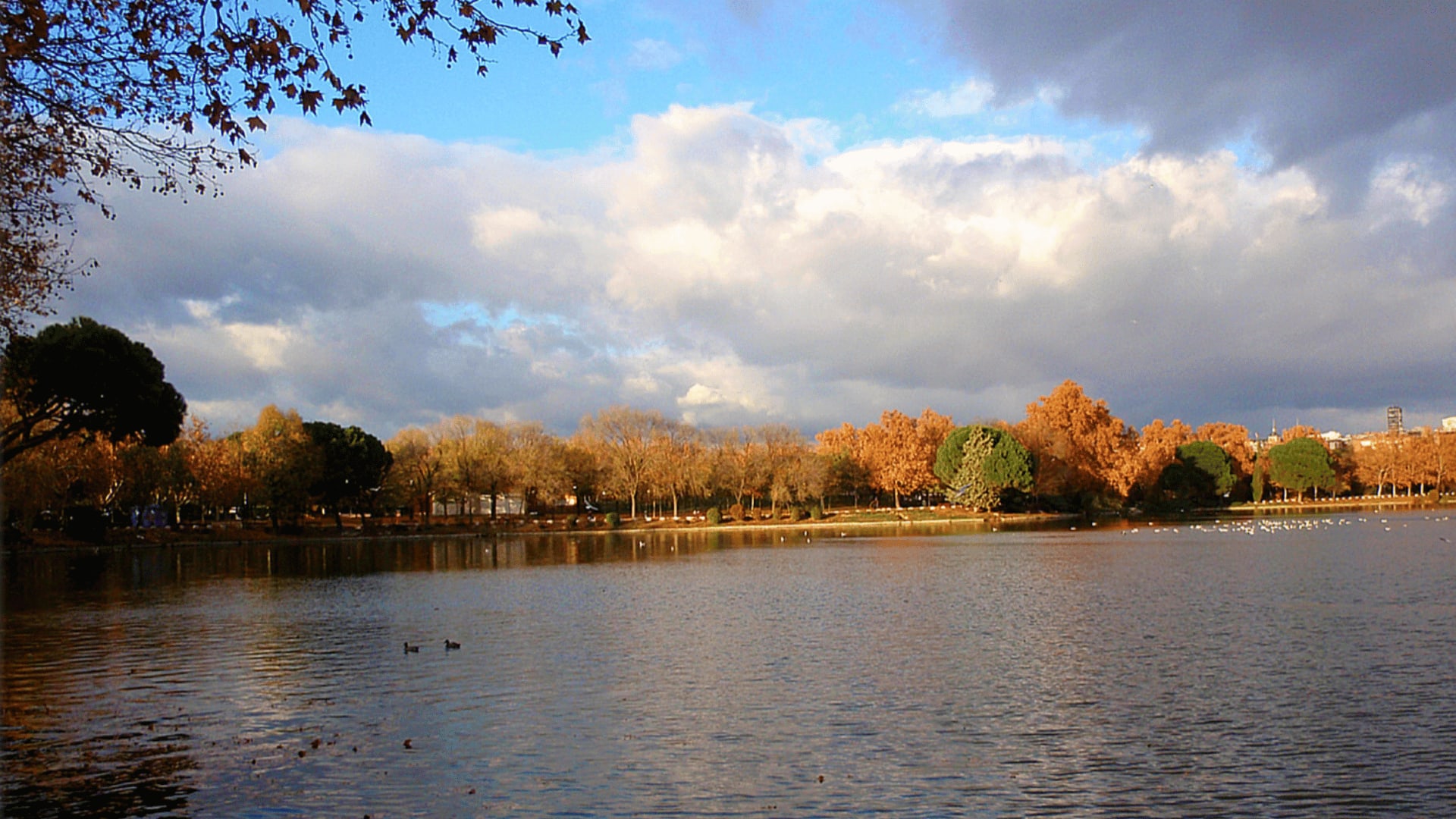
Depth: 4,50 meters
Surface: 80,150 m²
Distance from Madrid city: 3,1 km (10 min)
This artificial lake has a Renaissance origin. Everything comes from its roots in the 16th century, within the landscaping project entrusted by King Philip II to the architect Juan Bautista de Toledo for the conditioning of the Royal Site of the Casa de Campo.
In 2018 they had to do a colossal reformation which changed the park entirely, including its lake. But why I’m recommending you, Casa de Campo? It’s a perfect place to enjoy nature while having a drink in the bars and restaurants, as well as to do different leisure activities on the lake, which we will discuss later.
In 1563, by order of King Philip II, Pieter Yansen built a network of five interconnected ponds, one larger than the others (the largest one is the one that has given rise to the current lake). The Royal House wanted this so they could fish and navigate in gondolas as if they were in Italy. When the rainy season arrived, the five ponds were joined into one. One of the smallest ponds used to freeze in the winter, and they used it as a skating rink.
In 1931 Casa de Campo passed to Madrid’s citizens with the First Republic’s arrival. And, yes, now there is only one of the five largest ponds, Estanque Grande.
Casa de Campo is a neighborhood of Madrid belonging to the District of Moncloa-Aravaca. And today, I’m going to propose you a different and fun plan. Instead of going to Casa de Campo in your car, you could get the cableway in Pintor Rosales street (in Argüelles, close to the Temple of Debod). The cableway to Casa de Campo only takes 10 minutes, and you can enjoy the views of the Palacio de Oriente, the Almudena Cathedral, and of course, the Casa de Campo. When you finish enjoying your day, you can take the cableway to go back to Madrid.
There are many recreational activities to do at this lake. Most consist mainly of a collective motorboat, small rowing boats (like the ones in Retiro park), and people fishing (although everything you fish has to be returned to the water). You will see the Canoeing School of Madrid practicing for their competitions, as some occur here. You will also see people learning kayak polo, and some of the celebrations of this sport’s local and international championships are held in this lake.
3. El Pardo Reservoir

Depth: Unknown
Surface: 550 ha
Distance from Madrid city: 19,9 km (35 min)
Did you know that the reservoir is located in the district of Fuencarral-El Pardo? It is the largest reservoir in Madrid city.
El Pardo belongs to the national patrimony, the organization that manages the protected area of Monte de El Pardo. It is integrated within the Cuenca Alta del Manzanares Regional Park. The reservoir is built on the Manzanares, and the Manina stream, one of the tributaries of this river, also flows into it. Its function is to regulate the channeling dams of the Manzanares as it passes through the capital.
El Pardo reservoir was built in 1970, during the dictatorship of Francisco Franco. When the reserver was finally opened, something that no one expected happened… The valley was flooded, causing a strong impact on the ecological balance of Monte de El Pardo.
Today, the number of native species has gone from seven to only two. In exchange, exotic species, such as the pike, have been introduced into the reservoir to compensate for the lack of predators, with drastic consequences for the ecosystem.
The positive thing is that the waterfowl population has developed around the reservoir. This occupies an area of incredible landscape and fauna value.
4. Santillana Reservoir
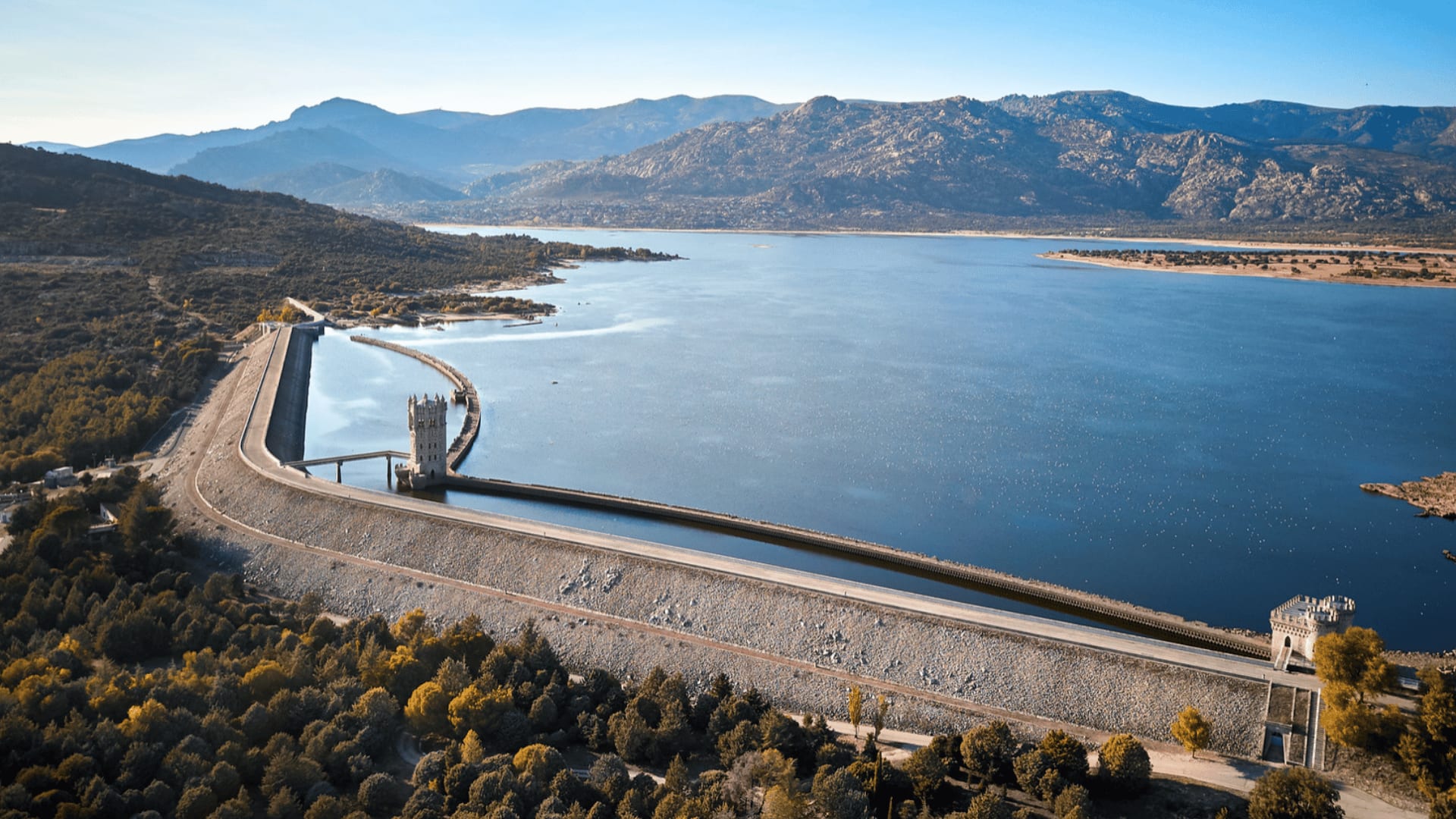
Depth: Unknown
Surface: 1,052 ha
Distance from Madrid city: 53,5 km (45 min)
The natural reservoir has a dam, and it was built in 1969. Before the new barrier was created, an old one was built in 1907.
In 1969 the construction of the new dam was completed, which was five meters higher and doubled the reservoir’s storage capacity. The new dam has been in service since 1971 and was built only in 12 months! But this dam wasn’t like the rest. The construction was thought of as an artistic monument and a symbol of the municipality. The work of Renaissance aesthetics was designed to be related to the New Castle of the Mendoza family.
The Embalse de Santillana is one of the favorite places for nesting, migration, and bird-watching. So if you are a nature lover, this is a place you will love to visit!
In the 20th century, the reservoir was restocked with fish such as carp and pike. For this reason, and thanks to the Mediterranean climate of the area, migratory birds began to spend most of the seasons here, even in some cases the whole year.
What is the use of this dam? Well, it regulates the Manzanares River’s flow and is the Santillana Canal’s source. In addition to the Manzanares, the Samburiel river and the Mediano stream, among others, flow into it. It is part of the protected area of the Cuenca Alta del Manzanares Regional Park.
The Santillana reservoir is located northwest of the Community of Madrid, in the municipalities of Manzanares el Real and Soto del Real, next to the Guadarrama mountains.
The Santillana reservoir offers you a wide variety of activities, so you can rest and relax. It’s an ideal place to enjoy nature, so you can walk, run, climb or cycle there. There are various hiking trails with different intensity levels for choosing the one you like, so there is no excuse now!
If you like fishing, you can do it in some delimited areas. If it’s a hot summer day I’m sorry to tell you that you will not be able to swim here, it’s prohibited… But, you can do other things, such as visiting the Castillo Nuevo de Los Mendoza, one of the best preserved medieval fortresses in Europe.
5. Navacerrada Dam

Depth: Unknown
Surface: 93 ha
Distance from Madrid city: 56 km (50 min)
The Navacerrada dam is located in Navacerrada, as the name indicates. Particularly at the bed of the river Samburiel, popularly known as “Navacerrada river,” a tributary of the Manzanares.
The Manzanares River is one of the most important rivers in the Community of Madrid, so if you want to know everything about this river and discover which are the most important rivers in Spain, do not miss these articles:
The 13 Best Rivers in Madrid to Enjoy a Different Outdoor Activity
The 34 Main Rivers in Spain + the ones no one tells you about
The Navacerrada dam has been operating since 1969 and is located at an altitude of 1200 meters. It’s one of the main dams of Madrid, belonging to the Canal de Isabel II. It supplies water to a large part of the northern municipalities, particularly the Sierra de Guadarrama.
But why did they make it? Was it a fundamental necessity? To answer this question, we must go back to the fifties!
During this time, the water supply was one of the main problems in Navacerrada and the villages around it. As this was a real problem affecting many people, the mayor decided to talk with the Dictator Francisco Franco. Franco promised them a quick and easy solution to this problem. That same year they built the Navaceerrada dam, which has contributed to the development of the Sierra Madrileña.
What is very interesting is the fact that the dam is one of the areas of Navacerrada where we can observe the highest concentration of birds throughout the year. Water blackbirds, wagtails, or gnatcatchers are the most common ones. Still, you can also see the golden eagle, owls, or eagle owls flying over the dam, among many others.
If you want to know more about the bird species in Spain, take a look at these articles:
It’s clearly signaled that it is prohibited to do any water sports, as well as bathing. You will also see signs that fishing is allowed, but you need a fishing license, and there are marked areas where you can fish. The most common fish here is trout.
What you can do for sure is a simple and beautiful 5 km trail. You can do it perfectly with children. I’m sure they will love to see the ducks that swim through its waters. This trail offers a spectacular panoramic view of the valley, La Maliciosa, La Bola del Mundo, and of course, the beautiful Navacerrada dam.
These plans help us disconnect from the routine and enjoy some time!
6. San Juan Reservoir
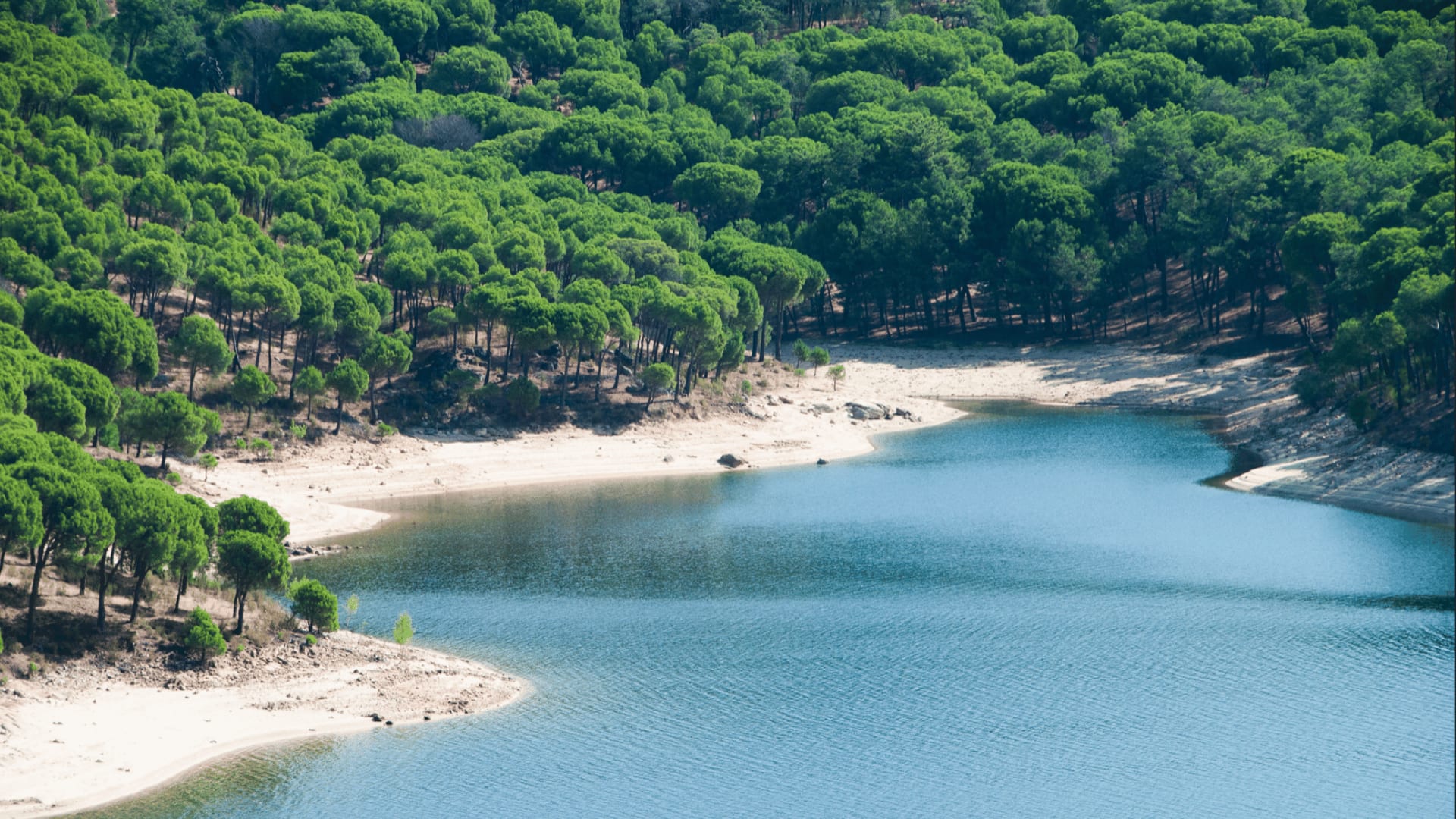
Depth: 70 meters
Surface: 6,5 km²
Distance from Madrid city: 71,5 km (1h)
In San Juan Reservoir bathing and motorized water activities are allowed.
San Juan reservoir was built in 1955 during Franco’s regime. The lake collects the waters of the Alberche and Cofio rivers to supply water and electricity to the southwest of the Community of Madrid.
San Juan reservoir is a reservoir located in the municipalities of San Martin de Valdeiglesias, El Tiemblo, Cebreros, and Pelayos de la Presa, in the southwestern end of the Community of Madrid and southeastern Avila, Spain.
In Pantano de San Juan, visitors can enjoy 14 kilometers of beach in a privileged natural environment. Playa Virgen de la Nueva is one of the most popular artificialbeaches for bathing, and it became the first blue flag beach achieved by the Community of Madrid in 2018.
There are many restaurants, bars, and picnic areas close to the beaches, perfect for a refreshing day. It is the perfect plan to do in Madrid on a hot summer day!
This reservoir offers you many different activities to have a great time here. Some land activities are climbing, archery, and hiking. I recommend you mount the Cerro de San Esteban, a steep and short climb with spectacular views of the lake.
If you are more into water sports, this is also your place! You can do kayaking, wakeboarding, water sky, paddle surfing, or flyboarding in the lake, which has become very fashionable in the last few years.
Something exciting I found out not so long ago was that this reservoir hides under its waters several historic buildings. When they constructed it, the waters flooded a medieval bridge directly connecting the river’s two banks. Also submerged some mills and the old hermitage of the Virgen de la Nueva, dating back to 1499, the devotees used to go on pilgrimage every Easter. Since 1955, people have been going to the new hermitage of the Virgen de la Nueva, built next to the reservoir to replace the original one.
Definitely, you always learn something new every day!
7. Atazar Reservoir
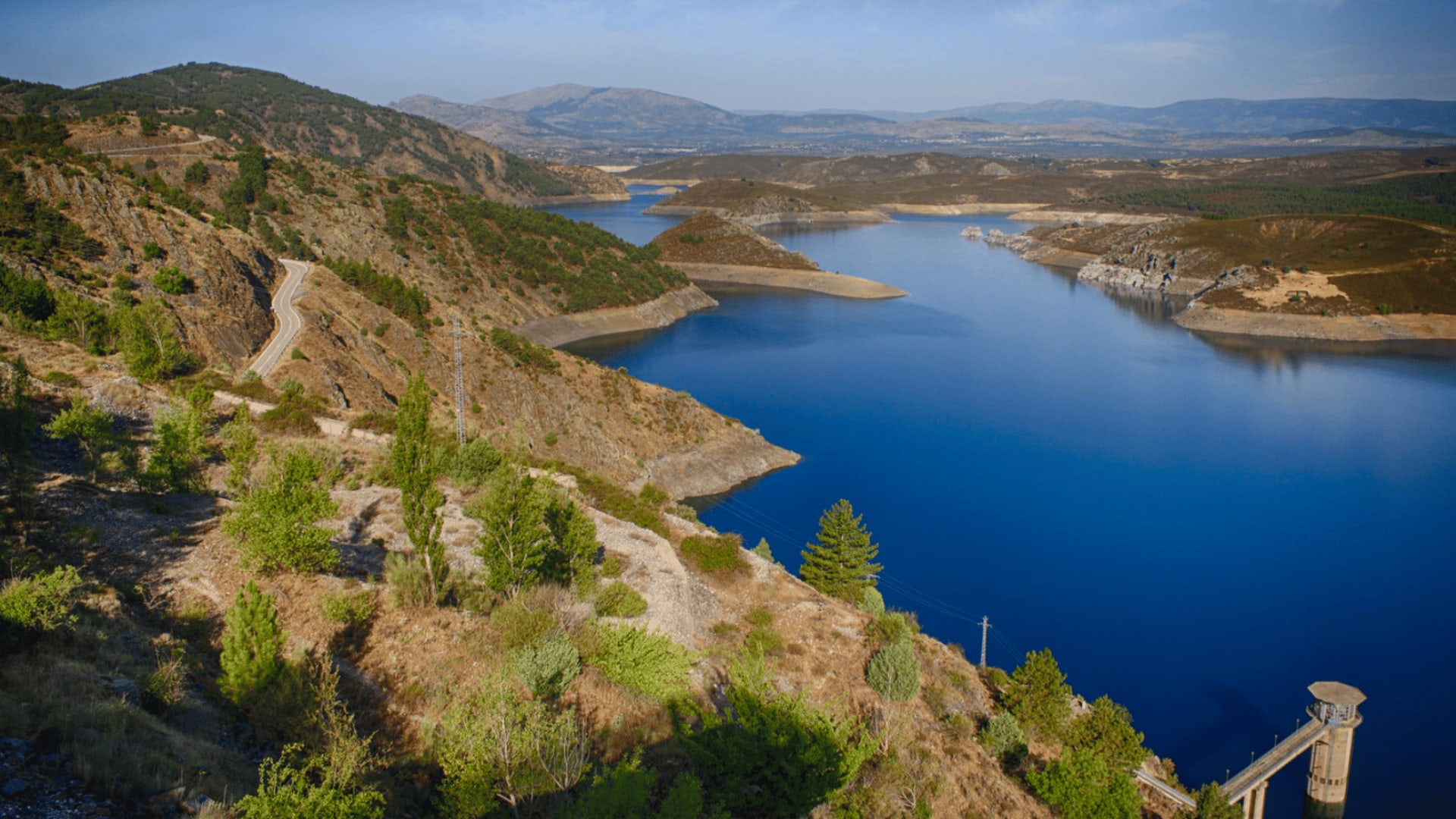
Depth: 100 meters
Surface: 10,7 km²
Distance from Madrid city: 77,2 km (1h 10 min)
The Atazar reservoir is the largest in the Community of Madrid and represents 46% of the region’s reservoir volume. It is the last and most important of the five that make up the Lozoya river basin.
This lake belongs to the Canal de Isabel II network. It is located in the lower valley of the Lozoya River, running through the municipalities of Atazar, El Berrueco, Cervera de Buitrago, Puentes Viejas, and Robledillo de la Jara.
Atazar reservoir can store almost all the water consumed by the seven million people of Madrid each year.
The construction of the Atazar reservoir started in 1965 and was under the management of Franco. This was the last to be completed of all the reservoirs built during his dictator’s regime.
An interesting fact would be that they used the most modern means and the best human components for its construction. Workers came from all over Spain, including workers from other countries such as France, Italy, and Portugal.
Depending on the season, a different activity can be carried out, with summer being the ideal time for bathing in the reservoir. Still, you must be careful because you have to ensure that it’s an area permitted.
During summer, it’s popular to see people doing some water activity, such as kayaking or paddle surfing. No matter in which season you are coming to this reservoir that is perfect for a bike ride, a walk, or enjoying some rural tourism! Also, you can travel along the spectacular roads of Sierra Norte with your motorcycle or car.
The villages around the reservoir have a wide range of gastronomic and accommodation options for those who prefer to stay for a few days in the area.
8. Pinilla Reservoir
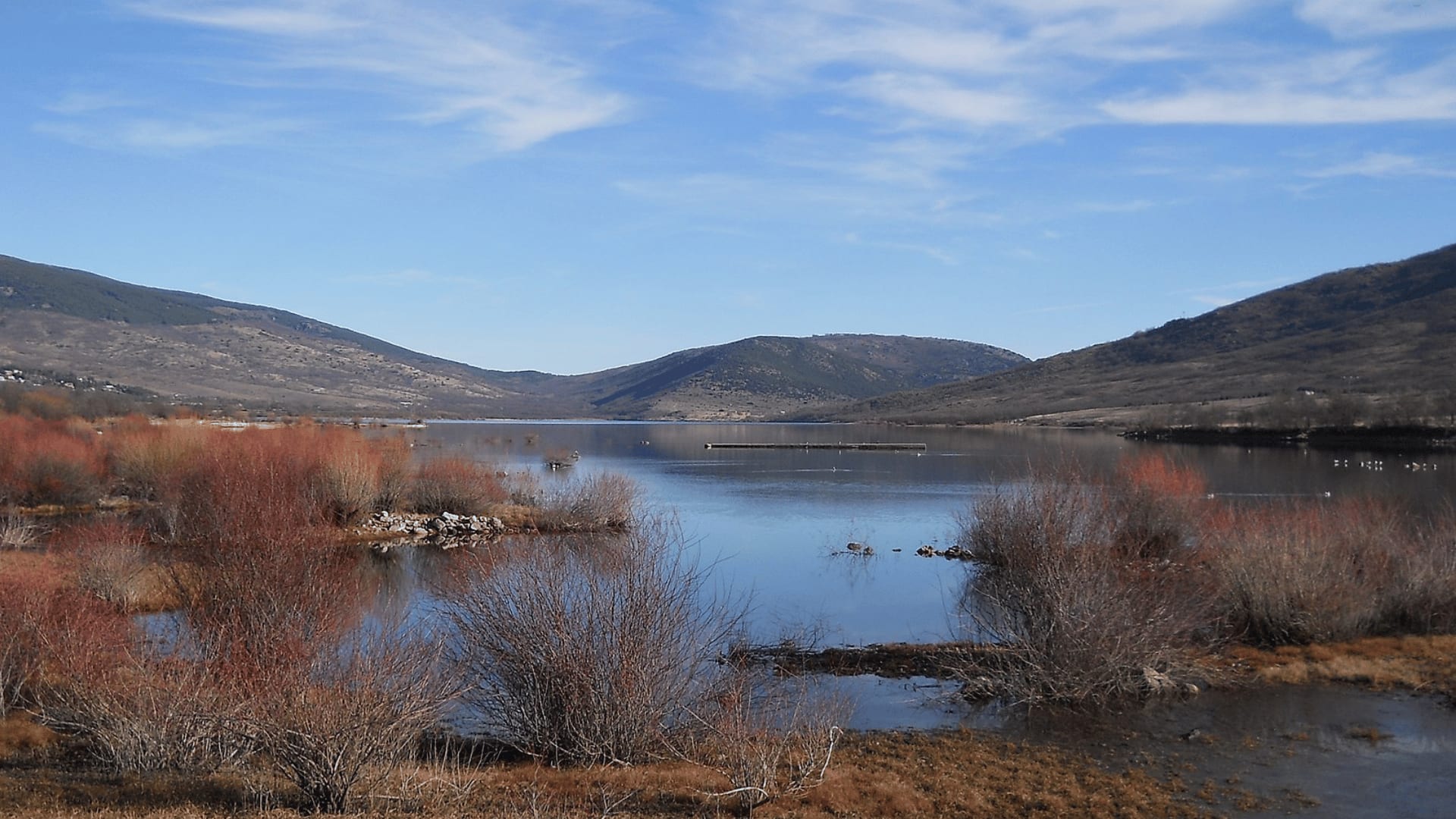
Depth: Unknown
Surface: 480 ha
Distance from Madrid city: 95,4 km (1h 15 min)
The Reservoir of Pinilla has influenced society in a way. Many years ago, women didn’t have a place to wash their clothes, so they found this reservoir the perfect place to do it, even during winter. But in winter, the lake was frozen due to the low temperatures, so women had to break the blocks of ice that left the swamp frozen.
Did you know that in Madrid it used to get so cold? And it also snows in winter! But Madrid is not the only area in Spain where it snows… There are many other regions where it snows much more! In fact, we have a whole post dedicated to snow in Spain:
What else do we know about this place? We know the reservoir was created after the consequences of the drought of 1964, which forced the imposition of water restrictions on Madrid. The government decided to take the issue of water supply to the capital as a matter of state.
The Embalse de Pinilla was inaugurated in 1958 and took 3 years to construct.
But something strange happened right after the reservoir was inaugurated; the water’s taste was very “peculiar.” After researching and doing different analyses, they concluded that this occurred due to the proliferation of algae on the ground. The good thing was that it didn’t cause any danger to health. Still, the Canal de Isabel II had to implement a system to neutralize odor and taste. It was one of the first reservoirs to test this ozonation and granular activated carbon filtration system.
I’m sure you are now wondering where this place is! It’s located in the Lozoya river’s upper course, north of the Community of Madrid (Spain).
Beyond its crucial function of supplying water, the Pinilla reservoir offered an enormous range of possibilities.
Many people come here to enjoy nature when there are good weather conditions. A perfect plan would be making one of their famous tracks, and after enjoying some time doing water sports at the reservoir such as canoeing and paddle surfing. Ohh! And you can also sail!
I’m happy to tell you that you can take a refreshing and relaxing bath in this lake!
9. Laguna Grande de Peñalara
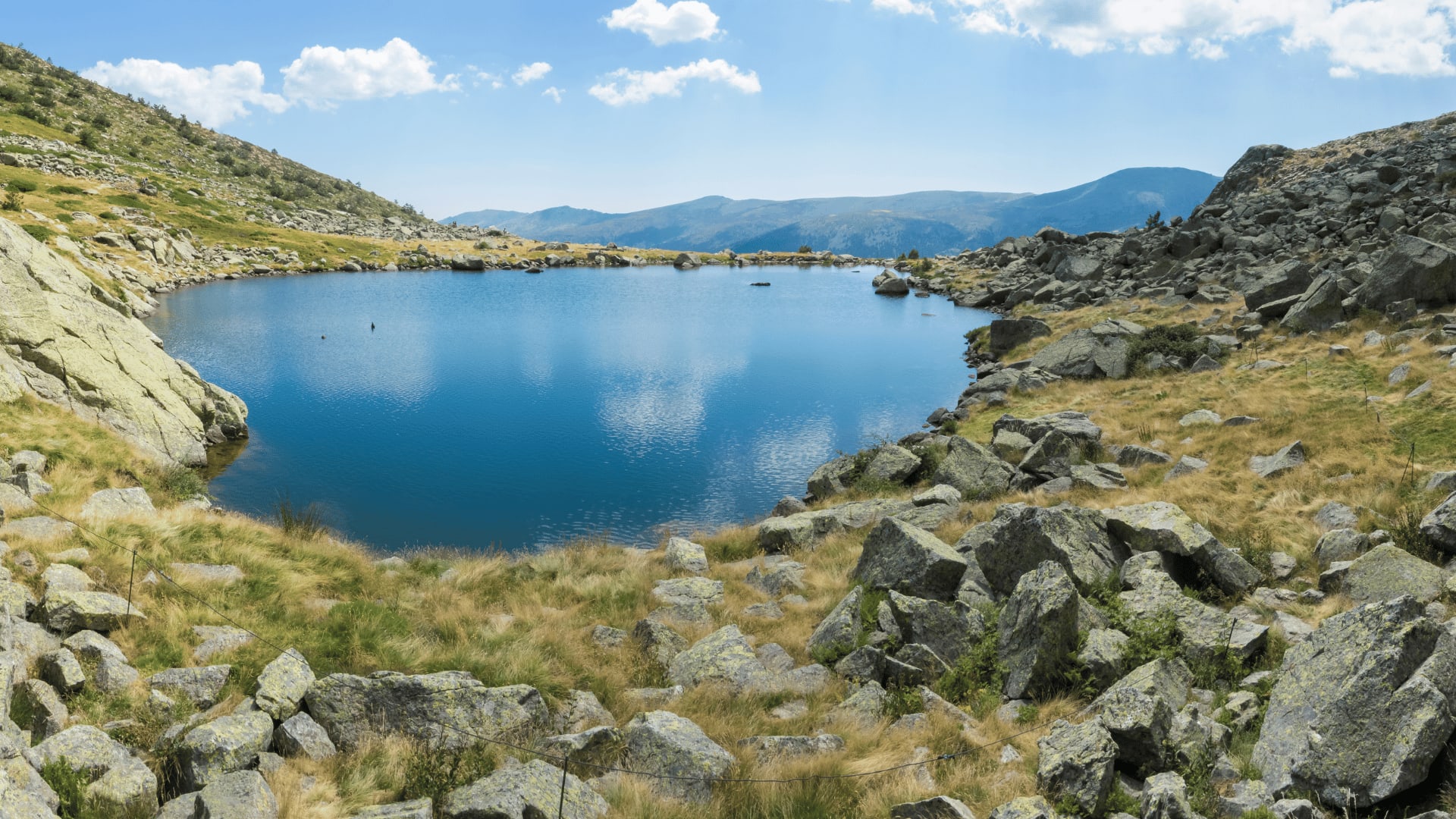
Depth: 4,8 meters
Surface: 5,779 m²
Distance from Madrid city: 98,8 km (1h 40 min)
In this natural lagoon, you will find a beautiful park that comes from a glacial origin.
From December to March, the lagoon is frozen due to the low temperatures in the area. Consequently, there are no fish in its waters but amphibians and birds. The environment of the lagoon has a maximum degree of protection within the natural park of Peñalara.
The Laguna Grande de Peñalara is located in the municipality of Rascafría and situated at the bottom of the Peñalara cirque, at 2,019 meters above sea level. It’s surrounded by rocky areas that have some high mountain scrub.
In fact, it is here where the highest peak of the Community of Madrid, El Peñalara, is located. However, this is not the highest peak in Spain… If you want to discover which are the highest peaks and their characteristics, take a look at this article:
In this lagoon, you can do many things. People from Madrid enjoy coming here on the weekends and disconnecting from the city chaos.
Here you will find fantastic hiking trails! Do you want to see the lagoon in a dreamy and magical environment? Then, I propose you make a beautiful route. The route it’s called the Laguna Grande de Peñalara, I’ve done it several times, and I absolutely love it!
It’s a simple track, and everyone can do it, so you don’t need any preparation requirements. You walk through beautiful landscapes, and my motivation when I do it is to get to the lagoon and see the magnificent views. There is no way you will get lost as the trail is well-marked. BUT, remember, don’t leave marks on the track because it’s totally forbidden! Not only for safety reasons but also for the conservation of the park.
As it could not be otherwise, the lagoon has a legend… It’s said that every night of the dead, an islet emerges from the center of the lagoon where the figure of a shepherdess can be seen with mysterious lights. A long time ago, a shepherdess lost a lamb among the rocks. Attracted by strange noises coming from the dark waters of the lagoon, thinking that they were the lamb’s bleating, she tried to save the lamb and drowned without remedy.
Some say that the shepherdess became a fairy of the waters and that with her sweet song, she tries to attract the mountaineers who walk in the area to drown them in the lagoon!
What do you think of the story? Do we believe it?
Here’s a map so you can get to all these lakes without any problem!
Do you know any of these lakes, or have you heard of them before?
Although not in all of them you will be able to take a refreshing swim or enjoy some activities or water sports, they are definitely worth a visit! So you can also make a different plan and disconnect from the city!



